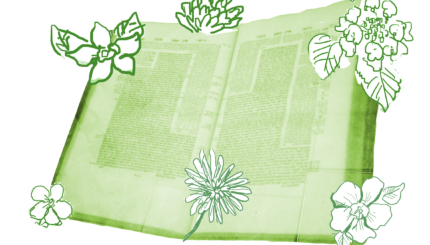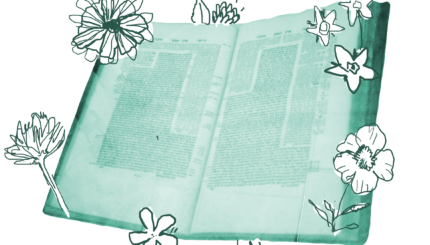“[The teaching] is very near to you, in your mouth and in your heart, so that you can do it.” Deuteronomy 30:14
It’s easy to allow the teachings of Torah to remain conceptual, as words to be reflected upon and discussed. But throughout those very teachings is overwhelming evidence that they are meant to be embodied.
What is embodiment?
Into your soul, and all of creation, something of the sublime has been downloaded. That which we experience as presence, as love, as life-changing, as divinity, is in you. Embodiment is the process of uploading that presence into action — into movement, into voice, into love, into our social structures — so that it can be encountered and felt.
How do we do that? First, by surrendering.
“Be still and know that I am God,” the psalmist wrote. Psalm 46:11
The word for “still” is harpu, which in Hebrew means stop. It means stop trying. Lay it down. Be with it precisely as it is. Every particle of your experience, let it be. Surrender resistance. Don’t even resist the resistance. Be with what is.
If you do that, then you will know. The Hebrew word for know is a form of yada, which also means to make love. Have you been intimate with something? Have you been penetrated by it? Has it penetrated you? Then you know it.
We are asked to stop so that we can know and be known by God, lived through or penetrated by the infinite. By surrendering, we align our highest self with the entirety of creation. We gracefully take our place in the symphony of things.
It doesn’t stop there. The psalm even lets us know why we do this. Why surrender the small self to be quickened into action by infinite? The psalm continues: It is so God “will be lifted among the nations and be in the earth.”
The psalm doesn’t say upon the earth, but in the earth, implying that creation is in fact made of God. When we surrender, godliness comes to the surface. God can be experienced, felt, and known — in our relationships, in how we treat one another, in our politics, in our world. God lives among us, as us. But we have to make space for it.
This takes a huge amount of trust. It is easy to look at what’s happening in the world and want to muscle our way through, struggle like crazy. We feel loneliness, we want to fill it. We feel discomfort, we seek distraction. We see injustice, we want to tear it to pieces.
But it is only when we meet exactly what is happening, exactly as it is, that our full capacity for powerful response avails itself. We become vessels for the optimal potential in that moment.
The practice of yoga offers limitless opportunities to practice this with our bodies. In Sanskrit, yoga means union – union with exactly what is.
Consider the tree pose, a yoga posture balancing on one foot. Begin by standing with your feet side by side. Now allow your left foot to take more of the weight, letting it grow heavier as though there are roots anchoring you down into the earth. Now let your right food grow lighter until it floats from the ground. Finally, either on its own or with the help of your hands, bring the right foot to the inside of your left ankle, calf, or thigh. You are now balancing on one leg.
Notice how you feel. Where are you holding tension? Is there a fear of falling?
The Hasidic master Nachman of Breslov taught, “Life is a very narrow bridge, and the most important thing is to not be afraid.” This sounds like a great idea, but when you’re on a narrow bridge (or on one foot), fear arises. It’s natural to resist, especially if we’re told not to be afraid. But Nachman tells us that we need not be afraid of fear.
The embodiment of this teaching in tree pose is a softening, an allowing to be as you are, noticing the fear and tension (or sadness, anger, joy, disappointment) instead of resisting it. Fear makes us rigid and more likely to fall — and if we do fall, more likely to experience pain. But if we allow ourselves to soften and, like the tree, sway in the wind, our stance becomes stronger.
Or try a seated forward-bend. To begin, sit on the floor with your legs outstretched on the ground in front of you. Let your pelvis get heavy, as if gravity was getting stronger from the center of the earth. Then surrender to that gravity, allowing the pelvis to root down and your spine to stretch upwards, like a plant growing toward the sun. Lengthen the back of the neck and press the top of your head up to the sky. Lift your arms and follow the center of your heart forward over your legs. Let your hands drop wherever they will.
Now bring your awareness to your mind. What is it saying? Sometimes it can be hard to know. So take a moment to zoom out and witness your thoughts. What are they saying?
In a forward fold, it might be saying any number of things. I like this. I don’t like this. This is not safe. I used to be able to do this much better. I have to check my email. I should have started this years ago. I can’t believe I’m doing yoga because an article told me to.
The mind is not supposed to not think. That is what minds do. So allow your mind to say what it’s going to say — but become aware of it, keep an eye on it as you would a rambunctious child. Let it be as it is. Similarly, let yourself be exactly as you are in your forward fold. Notice your judgement, and let it be.
In Exodus, when Moses asks God what to tell the Israelites when they ask who has sent him, God replies: “I am that I am.” Sometimes, when we surrender to this moment, to what is, something shifts and there is a softening that might just take you a bit deeper into your fold than you thought possible, a little deeper than the mind could think its way into with force. As the prophet Zechariah says, “Not by might, nor by power, but by spirit/breath.” Zechariah 4:6
And sometimes, just sometimes, an even more meditative effect can take hold. In total surrender, there is an opening that feels like connection to all things. And it is for that possibility that we practice.
Want more? MJL’s “Discovering Jewish Spirituality” email series will guide you through authentic Jewish methods of bringing spirituality into your everyday experience. Sign up here.
Enhance your spirituality journey by joining our weekly Jewish Meditation Moment for a brief Jewish teaching followed by a guided meditation.



